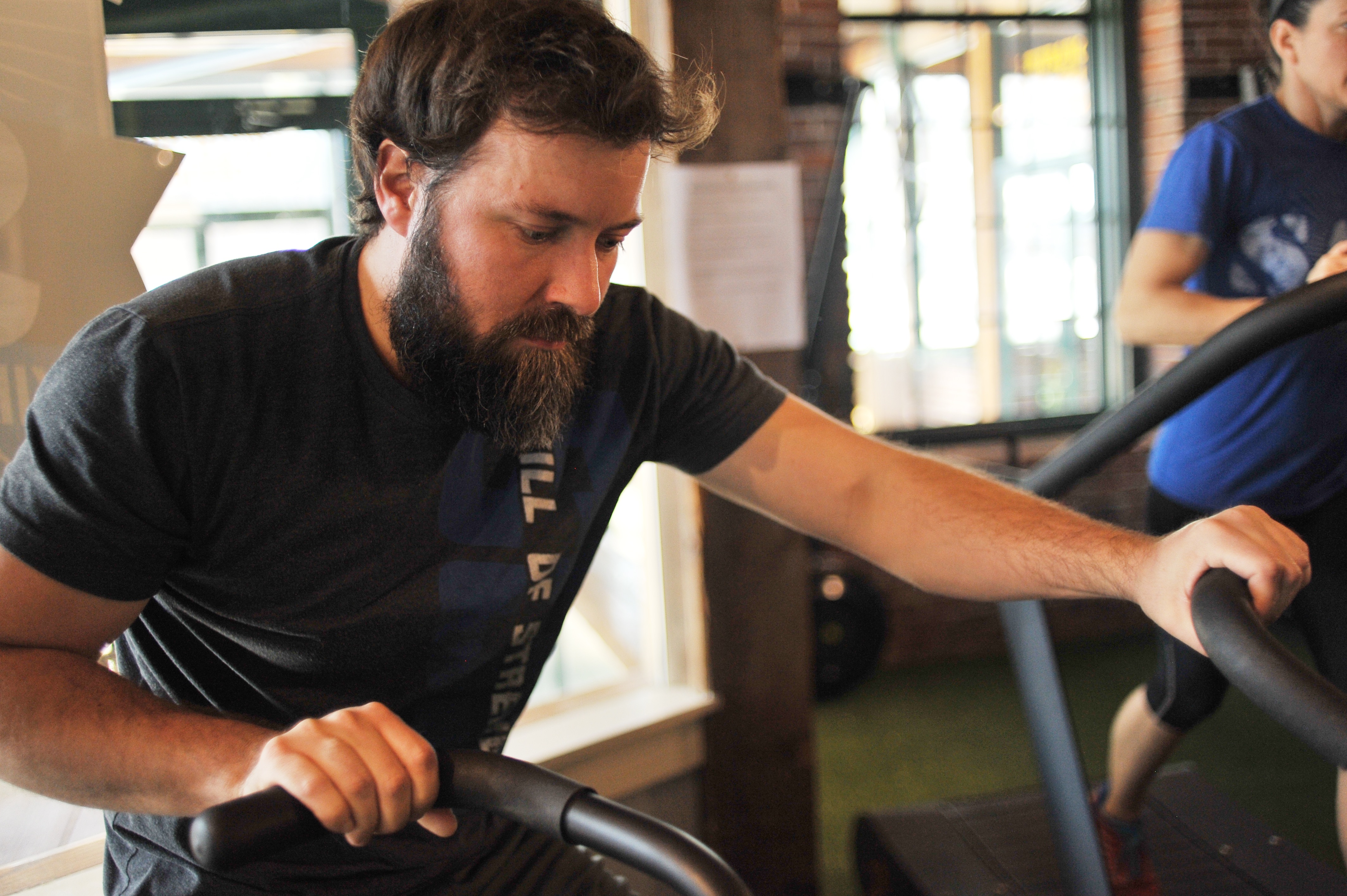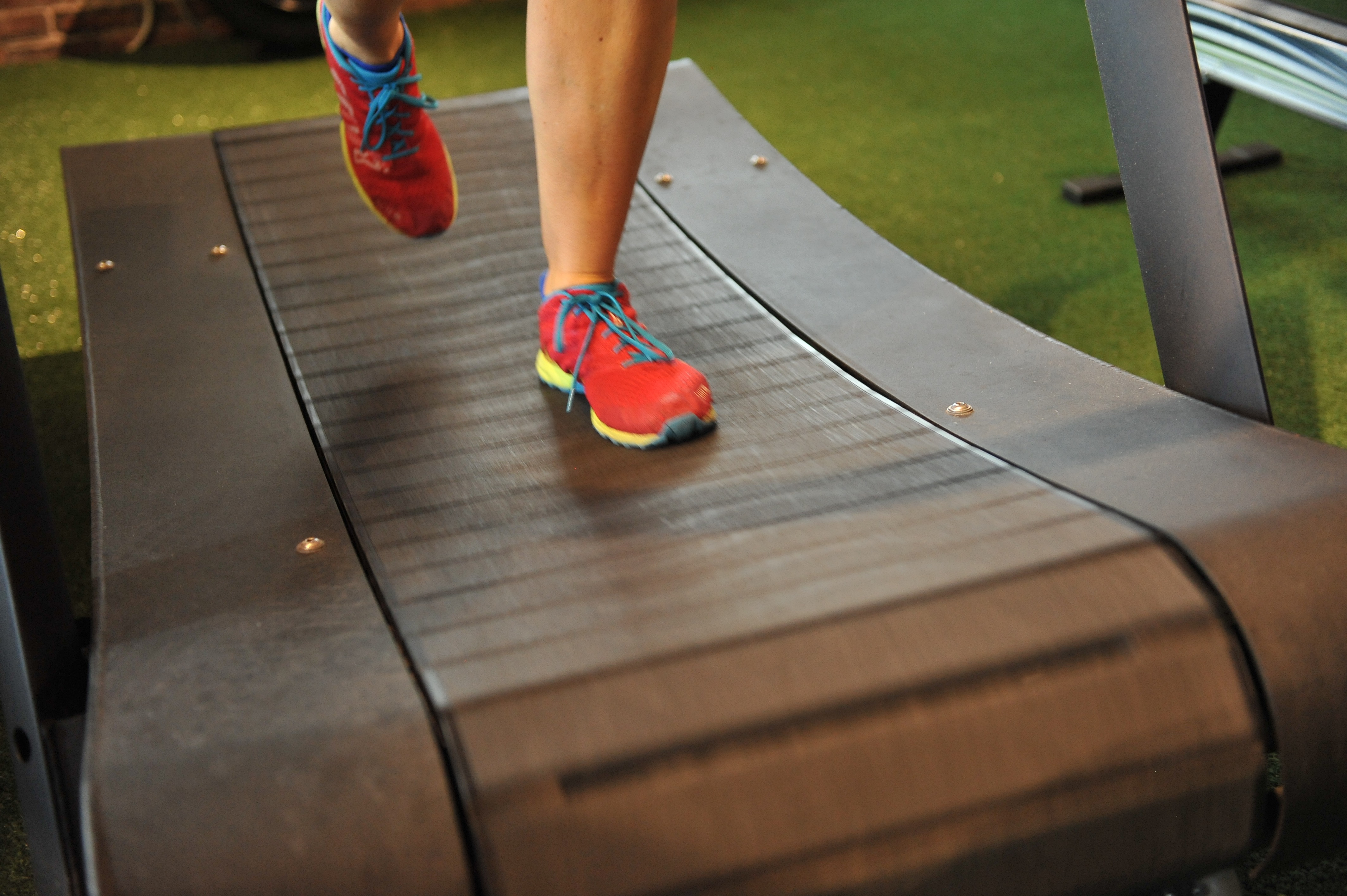There are hundreds, if not thousands, of ways to get “fit.” It’s easy to feel paralyzed by all of the options. And yup, it can be quite confusing if you’re looking to figure out how to improve your conditioning.
Hopefully I can help.
I absolutely don’t know it all, but today I want to share with you my thoughts on some steps you can start to improve your overall conditioning and cardiovascular health.

What’s the best way to improve your conditioning?
…and where should you start?
Step #1 – Increase Your Daily Activity
Starting now, get up, move more and start to increase your daily steps. What I mean in this first step is really quite simple, though maybe not easy, if you currently sit all day and move very little.
Technology can be incredibly beneficial. Buy a pedometer, Fitbit or Apple Watch and start to track your daily steps. Set a goal that’s realistic based on where you are at right now. For example, if you find you generally move 3,000-4,000 steps per day right now, don’t all of a sudden strive for 10,000. You’ll likely feel overwhelmed and quit before making progress.
Start with small jumps and eventually you can aim to hit the daily magic number of 10,000 steps per day.
Step #2 – Complete X amount of Work
Coach tip: Program a month of training like this, especially for beginners.
Don’t worry about time, personal record’s or crazy intervals. Instead finish each training session safely, making sure you’ll be able to train again within the next day or two.
Keep exercises low impact to start. Machines work best for this. When possible, wear a heart rate monitor to give you some feedback. Pay attention to your overall heart rate and see how different exercises impact you differently.
Record all sessions. This includes time, distance etc. Keep it simple (yet effective).
Here’s an example. Complete .5 miles on a treadmill, a 1 mile bike ride, a 300 meter row and a 300 meter ski. Slowly add volume to each of these for a month or so.
While adding volume is a great way to start, at a certain point it won’t be as effective. Thank goodness! If that were the case, we would be at the gym all day to get the best results! Let’s say you’re at a point where you’re doing 40 minutes of conditioning work in a session. The next step is to increase the amount of work done in less time. In other words, we need to increase density.
Step #3 – Increase Density
Coach tip: Start educating your clients on the basics of heart rate zones. Keep workouts similar, but have your client work slightly harder.
Try to perform the same amount of work in slightly less time. Again, don’t forget think about the next two days! Consistency still trumps intensity. Don’t forget to wear a HR monitor to give you some feedback. Record all sessions.
The programming here can be almost identical to phase #2, but now you’re trying to perform more work in less time.
Here’s a quick example. Lets say you can complete 3 miles of biking, 2000 meters of rowing and 1000 meters on the skierg in 40 minutes, in the next workout try to complete the same volume in 39 minutes. You get the idea, try to improve weekly!
Step #4- Introduce interval training
Coach tip: Give your client simple metrics on the “hard” interval and the “easy” interval. Start to utilize the heart rate zones discussed in step 3. Educate your client on working hard, resting as needed and repeating.
Note that when you’re doing interval training, there should be a distinct difference between easy and hard. Use metrics like watts, speed, distance covered to measure your intensity. Like in the other steps, pay attention to your heart rate during intervals if possible.
I like starting off with intervals like :5 on :30 off. Start with a 1:5 or 1:6 work to rest ratio and increase volume 5-10% weekly.
Step #5 Manipulate your intervals
Coach tip: At this point, your client’s conditioning should be improving so every once in a while throw in something tough to keep them on their toes and force them to work hard.
At this point, you can start to change the work to rest ratios. You can still use 1:5 ratios but also experiment with 1:3 or 1:4. Be smart and make sure your exercise selection is appropriate. Don’t work through pain or force exercises that feel awful for you.
Continue with slightly harder versions of intervals. This will vary based on individual fitness level, injuries, equipment available, etc. Throw in some “safe surprises” here, especially on days where you feel strong and energetic. You may even want to add in a finisher. Perhaps something like a hard, timed 2-mile ride on the assault bike after the interval work.
Step #6 – Introduce More Complex Exercises
Coach tip: After completing steps 1-3 with your clients you can start to introduce some more complex exercises. I’m talking about exercises that require a higher skill level, concentration and require your clients to think more about posture, cadence and fatigue management. Before you do this, make sure your client’s strength has been increasing all along.
This is where you can add in some more complex exercises like kettlebell complexes, bodyweight complexes, or medball throws. Make sure you know how to do these exercises and remember YouTube isn’t always “right.” I highly recommend learning from a coach or joining a fantastic group training program when you get to this step.
In step 6, a little bit of an ass-kicking is ok. However, don’t throw all of your hard work away. Make sure your exercises are safe, yet hard. Set some tough, but manageable, goals based off of skill level, strength and technique.
A few examples: complete a 5- min 100-rep snatch test or run a sub 6-minute mile.

Ready to Improve Your Conditioning?
The six steps above are just some basic guidelines for you to consider. Some people will never make it to step five or six and that’s OK. The goal here is follow a program that consistently challenges you. Coaches, make sure you are developing a logical training program that will consistently challenge your clients and athletes without breaking them. I would also make sure that you have done some of these workouts yourself, it’s important that you know, feel and understand what the training session feels like. This will help you with program design.
There are many ways to skin a cat. There are many ways to improve your conditioning. As with any training, you need to be smart. Use common sense and don’t be an idiot trying to go from being a coach potato to a 5-minute snatch test. Have fun!
